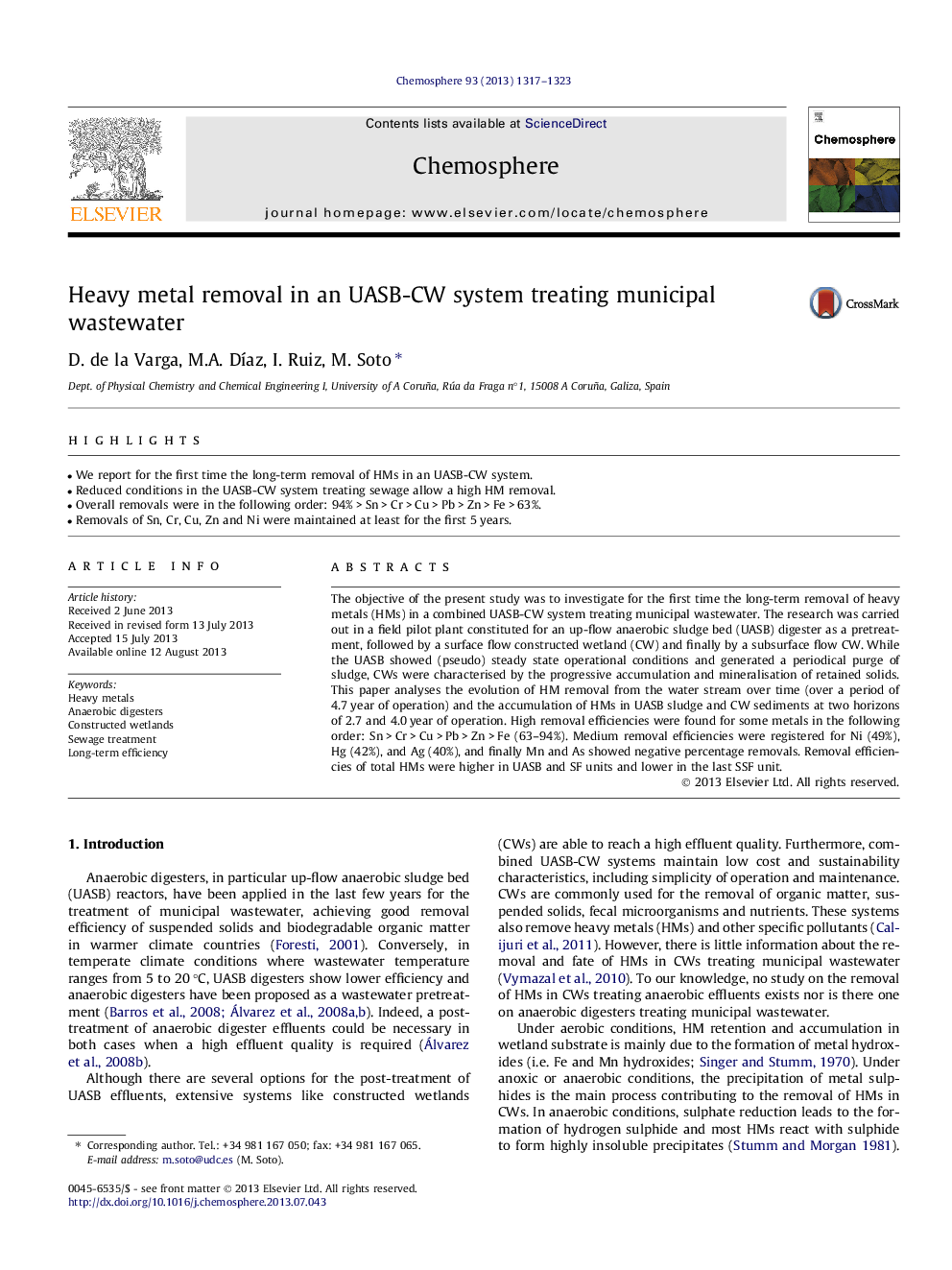| Article ID | Journal | Published Year | Pages | File Type |
|---|---|---|---|---|
| 4409188 | Chemosphere | 2013 | 7 Pages |
Abstract
The objective of the present study was to investigate for the first time the long-term removal of heavy metals (HMs) in a combined UASB-CW system treating municipal wastewater. The research was carried out in a field pilot plant constituted for an up-flow anaerobic sludge bed (UASB) digester as a pretreatment, followed by a surface flow constructed wetland (CW) and finally by a subsurface flow CW. While the UASB showed (pseudo) steady state operational conditions and generated a periodical purge of sludge, CWs were characterised by the progressive accumulation and mineralisation of retained solids. This paper analyses the evolution of HM removal from the water stream over time (over a period of 4.7 year of operation) and the accumulation of HMs in UASB sludge and CW sediments at two horizons of 2.7 and 4.0 year of operation. High removal efficiencies were found for some metals in the following order: Sn > Cr > Cu > Pb > Zn > Fe (63-94%). Medium removal efficiencies were registered for Ni (49%), Hg (42%), and Ag (40%), and finally Mn and As showed negative percentage removals. Removal efficiencies of total HMs were higher in UASB and SF units and lower in the last SSF unit.
Related Topics
Life Sciences
Environmental Science
Environmental Chemistry
Authors
D. de la Varga, M.A. DÃaz, I. Ruiz, M. Soto,
